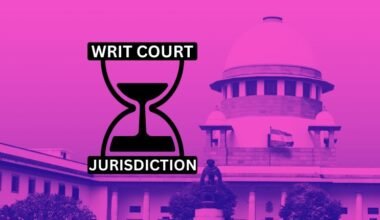Qui Facit Per Alium Facit Per Se is related to the concept of principal and agent, as well as vicarious liability. A person cannot be doing all his/her tasks himself or herself, and at times needs to delegate to others. In such cases, the agent so responsible for such tasks is not personally responsible, but through his/her master or principal. The legal maxim of Qui Facit Per Alium Facit Per Se lays the principle that someone who acts through another, is acting personally, and liable accordingly. Let us understand better what the context lays and how it leads the way for deciding liability in similar cases where action is delegated.
Qui Facit Per Alium Facit Per Se Meaning
Since the legal maxim Qui Facit Per Alium Facit Per Se is related to Agency, it imposes responsibility upon the parties. Looking at its literal meaning, it is “He who acts through someone, acts himself”. In other words, it reflects the contract of agency, wherein one person is authorised to act on behalf of another for a specific action. While another person is acting, the one who authorises such a person is responsible for the act done. Thus, the meaning of the legal maxim totally reflects the power of authority passed over to someone else, and the responsibility such authorisation brings along.
Examples of Qui Facit Per Alium Facit Per Se
While the concept of agency and vicarious liability is not complex to understand, given below are some examples for better understanding:
- An employer directs an employee to deliver goods. If wrong goods are delivered due to employee’s negligence, the employer bears the consequences.
- A homeowner instructs a builder to construct a deck. The said deck, due to faulty material, collapses and hurts a guest. The home owner would still be responsible for the loss suffered.
- A landlord instructs an agent to lease out an apartment. In this case, the lease is enforceable against the landlord.
- A delivery company sends a driver who causes an accident. The company may be liable for the driver’s negligence and to compensate the victim.
Qui Facit Per Alium Facit Per Se Case Law
While the Qui Facit Per Alium Facit Per Se meaning is very much clear, the same when applied to specific facts by the Courts brings better understanding. Let’s have a look at major case laws on the legal maxim hereunder:
State Bank of India v. Shyama Devi (1978)
In this case, the Court dealt with the Legal principle which governs the vicarious liability of an employer for the loss caused to a customer through the misdemeanour or negligence of an employee. The petitioner opened a bank account through their neighbour who happened to be an employee of the same bank. The money they sought to deposit in the bank was not actually deposited. The petitioner sued the bank for recovery, and the bank denied any responsibility for the acts of the employee.
The Supreme Court looked at the actions and the influence this neighbour-banker had over other customers and bankers, the Court held the bank vicariously liable for his acts.
Firm Of Pratapchand Nopaji v. Firm Of Kotrike Venkatta Setty (1974)
This case included an interesting question of whether wager contracts could be legalised by persons not acting themselves but through agents. The Supreme Court clarified that what is illegal for someone, cannot be legalized through agency. In the Court’s words – “The law in Bombay State relating to wagers and the law in India relating to prohibition of sale and purchase of oil seeds cannot be circumvented by the agreements referred to in paragraphs above being made between agents of principals and instead of principals themselves. Qui facit per alium facit per se. A person might not do by means of another what he is prohibited from doing himself.”
Ravula Subba Rao v. CIT (1956)
How does the concept of agency or vicarious liability play for the purpose of taxes when the requirement is “personal” as against a duly authorised agent? The said question was addressed by the Supreme Court in this case. The Apex Court clarified that “the Indian Income-tax Act is a self contained code exhaustive of the matters dealt with therein, and its provisions show an intention to depart from- the common rule, qui facit per alium facit per se.”
Deo Narain Rai v. Kukur Bind (1902)
The case pertains to a mortgage wherein the mortgagor was illiterate and the deed was signed by a scribe by the direction and presence of such mortgagor. Whether or not the scribe’s signature would bind the mortgagor was discussed in detail. The Court held that “if there is no clear indication that the Legislature intended that the signature shall be an autograph signature, the common law rule qui facit per alium facit per se should be applied.”
Conclusion
The principle of Qui Facit Per Alium Facit Per Se, as we have seen, lays the context for vicarious liability, mostly in the relationship of agent and principal. Where there is delegated duty, it is not always the one who acts will be liable. Since the one whose task is being performed enjoys the fruits, the same person is required to take up the liability when there are legal consequences.








